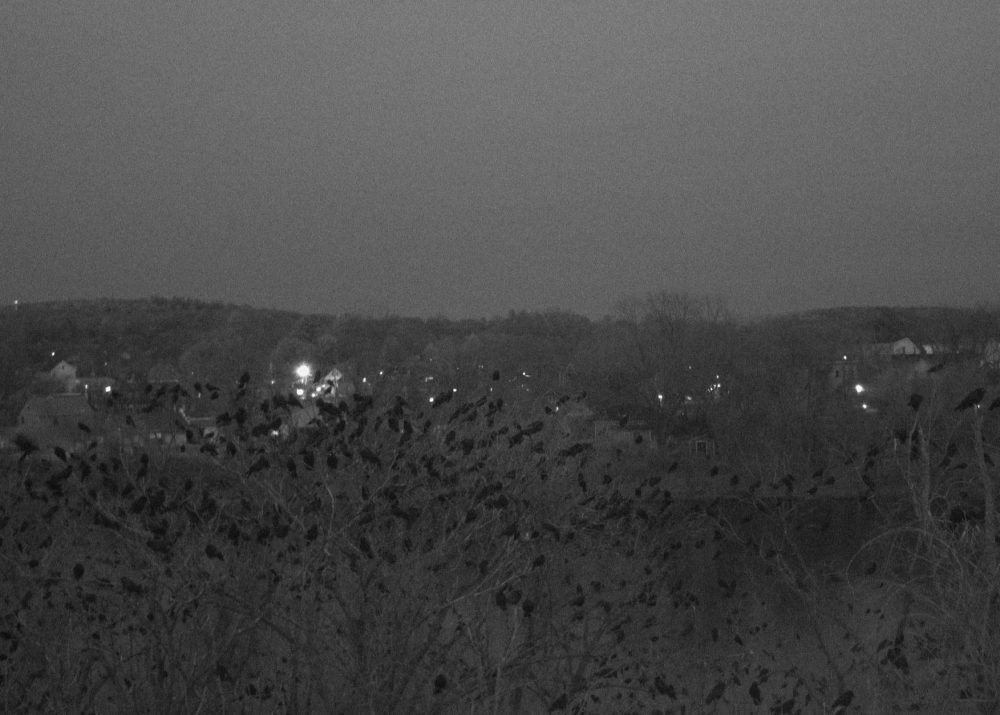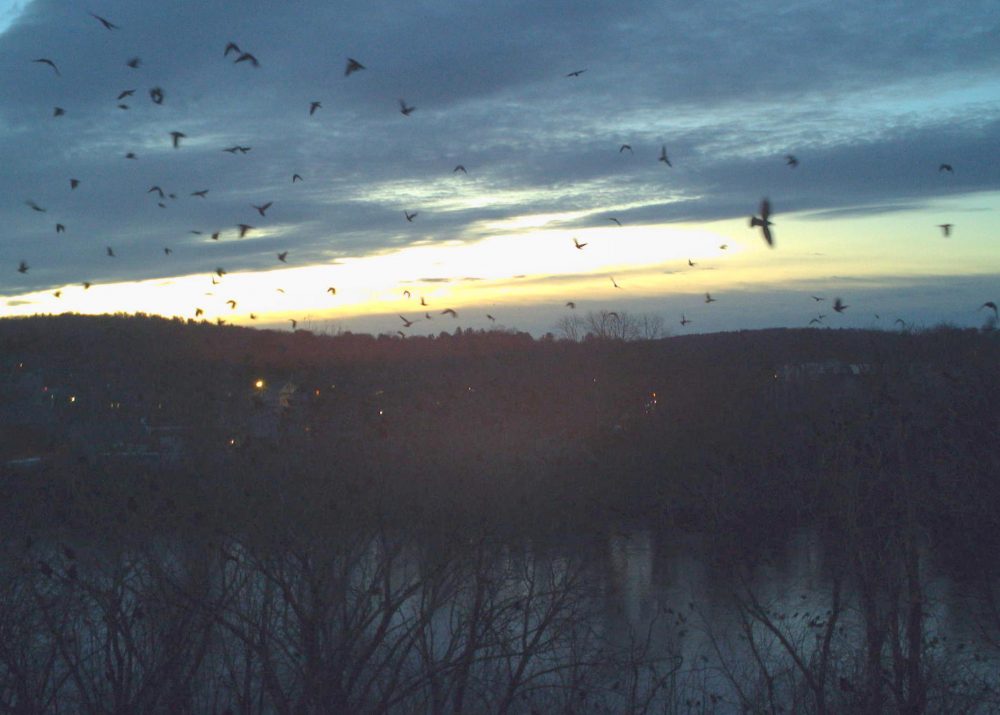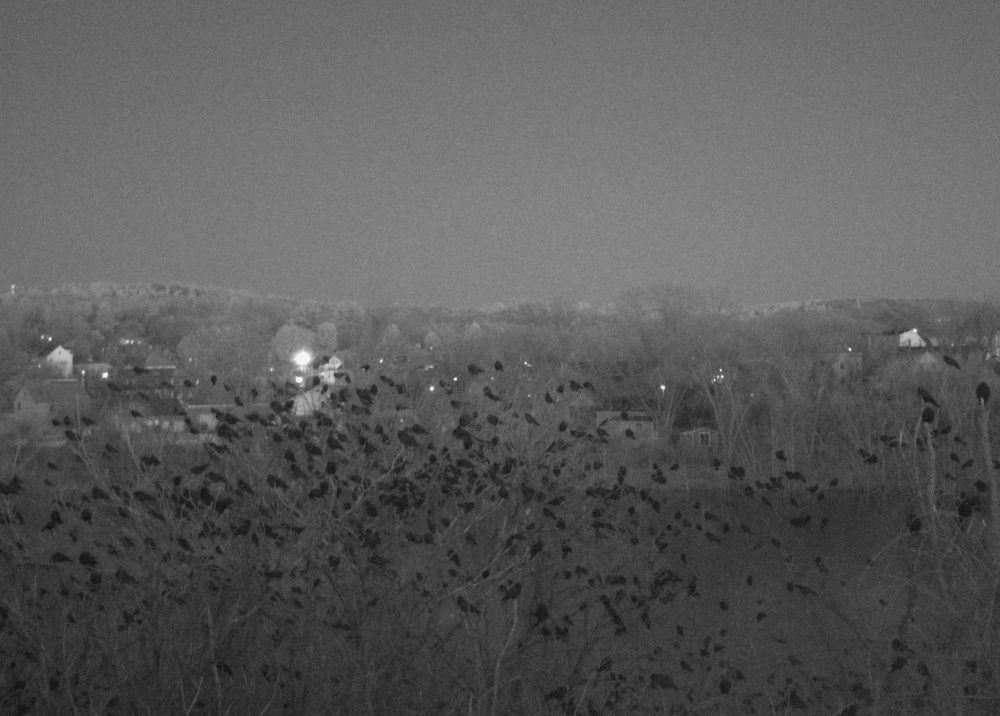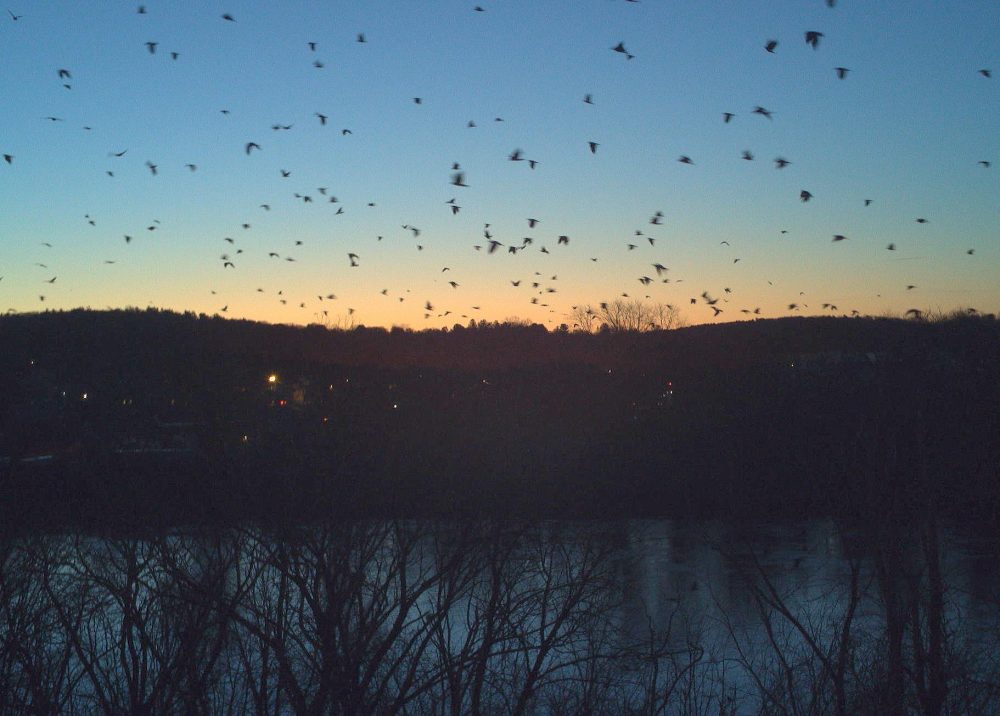Observation period: just before sunset on Saturday, March 14, until just after sunrise on Monday, March 16
Conditions: generally clear skies, variable winds up to 10 MPH, and temps from 20F to 48F
We are continuing to deploy an ever expanding range of photography gear, audio devices, and even new light meters to help us better understand the behavior and patterns of the Crows around the Winter Crow Roost. This past Saturday afternoon, had a chance to place the new Reconyx HP2X Professional Series Camera out for two days overlooking the roost area. This camera is part of a series of cameras that have been highly favored by wildlife researchers and biologists. We’re still in the early phases of adjusting for this usage application, especially the best ways to optimize for night vision. This first image below shows the Crows settling into the overnight Crow Roost about 20 minutes after sunset time on Saturday night. A review of the photos, taken from the NW, about 150 meters from the roost, and looking SE, shows the Crows initially settling into tree tops and then moving to lower elevations after dark. We hope to look at this after dark movement pattern in greater detail.

The next image below shows the Crows on Sunday morning dispersing from the general roost area at 6:34AM, about 20 minutes prior to sunrise time. A review of the photo sequence shows many bursts of Crows departing over a 6o minutes period leading up to sunrise time. The Crows seem to disperse in all directions as they head out to foraging grounds for the day.

This next image shows the Crows on Sunday night, this time at 7:21PM, about 30 minutes after sunset time. They are perching in the same area as night before and with about the same density as well. A review of other photos shows the same pattern of moving mostly to lower elevations after dark.

This final image below, taken on Monday morning, March 16 at 6:28AM, about 26 minutes before sunrise time, shows the same early morning dispersal pattern as prior day. The Crows go through a sequence of bursting into flight and then heading off in all directions to foraging grounds for the day.

Going forward, we’ll be making adjustments, moving the camera closer, and hoping to optimize the infrared capability for extended night vision images. This will open up new perspectives on how the Crows move around in the roost after dark. One of the challenges is the ability to place the camera in one of a limited number of locations, with desired viewing angles and proximity. Stay tuned!!


Leave A Comment